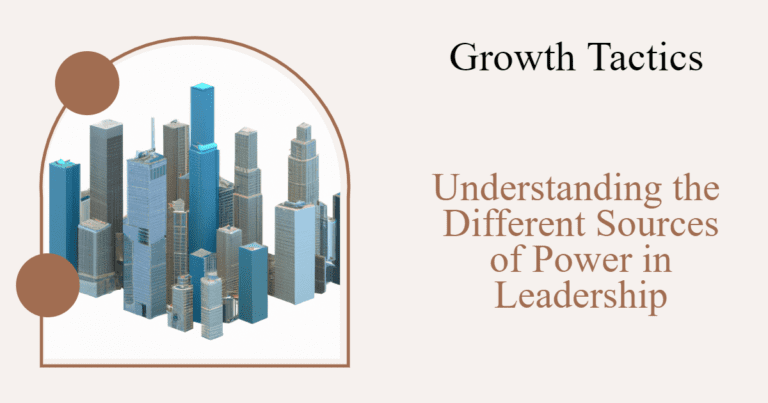Ever wonder why some small groups shine while others struggle? It’s all about small group dynamics.
As a leader, understanding these hidden forces can be your secret weapon. Let’s hop into the world of small group dynamics and see how you can use them to your advantage.
Jump To Section
What Are Small Group Dynamics?
Ever been part of a group where everything just clicked?
Or maybe you’ve been in one where nothing seemed to work right.
That’s small group dynamics in action. They’re like invisible strings pulling your team together or pushing it apart.
Think of group dynamics as the personality of your team. Just like people, every group has its own quirks and habits.
These shape how your team talks, decides and gets things done. As a leader, understanding these forces is like having a secret superpower.
I remember leading a project team that was struggling. We had the talent, but something was off. Our meetings were quiet, and nobody seemed excited about the work. So, I decided to shake things up.
We started with a team-building exercise where everyone shared a personal story about overcoming a challenge. Suddenly, the room came alive. People started opening up, asking questions, and offering ideas. Those invisible strings were pulling us together.
From that day on, our team dynamics shifted. We created new habits, like starting meetings with a quick check-in and celebrating small wins. The project that was falling behind? We not only finished on time but exceeded expectations.
This experience taught me how powerful group dynamics can be. They can turn a struggling team into a powerhouse. But here’s the thing: every group is different. What worked for my team might not work for yours.
The Building Blocks of Group Dynamics
Now that we know what group dynamics are, let’s break them down into bite-sized pieces. Think of these as the ingredients in your team’s secret sauce.
First up, we have group cohesion. It’s the glue that holds your team together. When you’ve got good cohesion, your team feels like a unit. They’ve got each other’s backs and work towards the same goals.
I once led a team where cohesion was low. People worked alone and rarely asked for help. To fix this, we started each week with a quick team breakfast. Nothing fancy, just coffee and donuts. But it got people talking and sharing. Soon, we were more than coworkers, we were a team.
Next, let’s talk about group norms. These are the unwritten rules that guide how your team behaves. They’re like your team’s personality. Maybe your team always starts meetings on time, or perhaps they have a “no idea is a bad idea” rule during brainstorming.
Roles within the group are our last building block. This isn’t just about job titles. It’s about who naturally takes on certain tasks. You might have a peacemaker who smooths over conflicts or a cheerleader who keeps everyone motivated.
Here’s a challenge for you: At your next team meeting, watch for these building blocks. Who’s bringing the team together? What unwritten rules do you see in action? Who’s taking on different roles?
Your job as a leader isn’t to force these building blocks into place. It’s to create an environment where they can develop naturally. Give your team the space to bond, set their norms, and find their roles.
So, what’s your next step? Pick one of these building blocks and focus on it this week. Maybe you’ll boost cohesion with a team-building activity. Or perhaps you’ll have a chat about your team’s unwritten rules. Whatever you choose, make it purposeful and tailored to your unique team.
Remember, great teams don’t happen by accident. They’re built, one block at a time. What will you build today?
Communication: The Lifeblood That Keeps Your Team Thriving
Communication is the heartbeat of your team’s dynamics. Without it, even the strongest team can fall apart. But with good communication, your team can move mountains.
Think of how information moves in your group. Is it like a game of telephone, where messages get muddled? Or is it more like a clear stream, flowing freely to everyone?
I once led a team where information got stuck at the top. People felt left out and frustrated. So, we shook things up. We started daily stand-ups. Quick 10-minute chats where everyone shared what they were working on. It wasn’t rocket science, but it made a world of difference.
Now, let’s tackle those pesky communication roadblocks. Maybe it’s fear of speaking up, or perhaps some team members dominate every conversation. Whatever it is, these roadblocks can trip up even the best teams.
Here’s a challenge for you: At your next meeting, count how many people speak up. Is it always the same folks? If so, it might be time to clear some roadblocks.
So, how do we get everyone talking? Here are a few ideas:
- Create a “no-judgment” zone for brainstorming.
- Use anonymous feedback tools for sensitive topics.
- Rotate who leads meetings to give everyone a voice.
But remember, these are just starting points. The best solution will be one that fits your unique team like a glove.
Here’s your call to action: Pick one aspect of your team’s communication to focus on this week. Maybe you’ll work on information flow, or perhaps you’ll tackle a specific roadblock. Whatever you choose, approach it with purpose.
Remember, good communication doesn’t just happen. It’s cultivated, nurtured, and grown. So, what seeds will you plant in your team today?
Power and Influence: The Hidden Forces Shaping Your Team
Now let’s dive into something that’s always there, even when we don’t see it, power and influence in your team. It’s like gravity. You can’t see it, but it’s always pulling the strings.
Ever notice how some people in your group seem to have more sway? That’s power at work. It comes in different flavors:
- There’s the official power that comes with a title.
- Then there’s expert power; when someone knows their stuff inside out.
- Don’t forget charisma power; some folks just have that natural charm.
I once worked with a team where the quietest person had the most influence. Why? Because when she spoke, her words carried weight. She had expert power, and people listened.
Now, if you’re leading a team, you’ve got influence. The question is: how will you use it?
Here’s a thought: Use your influence to lift others up. When you shine the spotlight on your team members’ strengths, everyone wins. It’s like watering a garden, the more you nurture, the more it grows.
But here’s the tricky part: balancing your authority with group input. It’s like being a DJ at a party. You’re in charge of the music, but you’ve got to read the room and play what people want to hear.
Try this: Next time you’re making a decision, ask for input first. You might be surprised at the great ideas hiding in your team. And when people feel heard, they’re more likely to get behind the final decision.
Remember, though, these are just starting points. The best approach? That’s something you’ll need to figure out for your unique situation.
So, here’s your mission: This week, pay attention to the different types of power at play in your team. Who has influence, and why? How can you use your own influence to make your team stronger?
Power and influence aren’t good or bad on their own. It’s how we use them that matters. So, how will you use yours to create a team where everyone can thrive?
Making Decisions Together: The Art of Group Choices
Let’s talk about how teams make decisions. It’s like cooking a meal together, everyone has ideas, but you need to agree on the final recipe.
Remember how we talked about power and influence? Well, they play a big role in decision-making too. But there’s a twist: sometimes, the group can think as one, and that’s not always good.
I once led a team where everyone agreed too quickly. Sounds great, right? Wrong. We missed some big problems because no one spoke up. That’s groupthink, and it can lead to poor choices.
So, how do we avoid this trap? By encouraging healthy debate. It’s like having a friendly argument, everyone shares their view, and the best ideas rise to the top.
Here are some ways to make decisions that include everyone:
- Round-robin: Go around the group and let each person speak.
- Anonymous input: Let people share ideas without names attached.
- Break into smaller groups: Sometimes it’s easier to speak up in a smaller crowd.
But what about you, as a leader? When should you step in? It’s tricky. You don’t want to overpower the group, but sometimes you need to guide things.
I’ve found it’s best to step in when:
- The debate gets heated and personal
- The group is stuck and can’t move forward
- There’s a time crunch and a decision must be made
Here’s a challenge for you: In your next team meeting, try one of these techniques. See how it changes the way your group makes decisions.
So, think about it: How can you make decisions in a way that brings out the best in everyone? How can you create an environment where all voices are heard, but you still move forward?
Your choices shape your team’s future. Make them count.
When Teams Clash: Turning Conflict into Growth
We all face conflict in our teams. But is it a troublemaker or a secret weapon? Let’s find out.
Remember how we talked about healthy debates? Well, sometimes those debates heat up. That’s when conflict knocks on the door.
I once led a project where two team members couldn’t agree on anything. It was tough, but guess what? Their clash led to our best ideas yet.
So, where does conflict come from? Often, it’s about different goals, values, or ways of working. It’s like everyone’s speaking a different language.
But here’s the thing: conflict isn’t always bad. It can make your team stronger. How? By bringing out new ideas and pushing everyone to think harder.
Try these tips to turn conflicts into team wins:
- Listen first: Really hear what everyone’s saying.
- Find common ground: Look for things you all agree on.
- Focus on the problem, not the person: It’s not about who’s right, but what’s right.
Think about your team. What conflicts do you see? How could they help you grow?
Here’s your challenge: Next time there’s a disagreement, don’t shut it down. Guide it. Use it to make your team better.
Conflict can be your friend or your foe. It’s up to you to decide. So, how will you use it to build a stronger, more purpose-driven team?
Growing Pains: Leading Your Team Through Change
Groups change over time. It’s like watching a plant grow; it needs different care at each stage.
Groups typically go through four stages:
- Forming: Everyone’s polite but unsure.
- Storming: Conflicts pop up as people find their place.
- Norming: The team starts to work well together.
- Performing: You’re firing on all cylinders!
As a leader, you need to adapt to each stage. Here’s how:
- Forming: Be clear about goals and roles.
- Storming: Listen and help resolve conflicts.
- Norming: Step back and let the team shine.
- Performing: Challenge the team to reach new heights.
But here’s the thing, your team might not follow this exact path. That’s okay! Every group is unique, just like every person in it.
Think about your own team. What stage are you in? How can you help them move forward?
Try this: At your next team meeting, talk about where you think you are as a group. See if everyone agrees. It might spark some interesting conversations!
Remember, your job as a leader changes as your team grows. Stay flexible and keep learning.
So, are you ready to guide your team through its next growth spurt? Your purpose as a leader is to help each person, and the whole team, reach their full potential. Let’s make it happen!
Team Magic: Creating a Winning Group Vibe
We’ve chatted about how teams grow and change. Now, let’s focus on making that journey as smooth as possible. It’s like planting a garden, you need to prepare the soil before you can grow amazing things.
Here’s how you can kick things off right:
- Set the tone: From day one, show your team what matters. Be open, kind, and ready to listen.
- Build trust: Create a safe space where people can be themselves. No idea is too silly, no question too basic.
- Create good habits: Encourage behaviors that make everyone feel valued. Like celebrating small wins or respecting each other’s time.
Try this: At your next team meeting, ask everyone to share one thing that helps them feel safe and respected at work. You might be surprised by what you hear!
Think about your own team. What kind of vibe do you want to create? How can you make that happen?
Your purpose as a leader is to create an environment where everyone can do their best work. So, are you ready to sprinkle some team magic? Let’s make your group dynamics work for you, not against you. Your team’s success story starts now!
Conclusion
Understanding small group dynamics isn’t just about theory, it’s about making your team work better.
By tuning into these invisible forces, you can create a group that’s more than the sum of its parts.
Remember, great leadership is about empowering others. Use what you’ve learned to build a team that thrives. Your group is counting on you!








